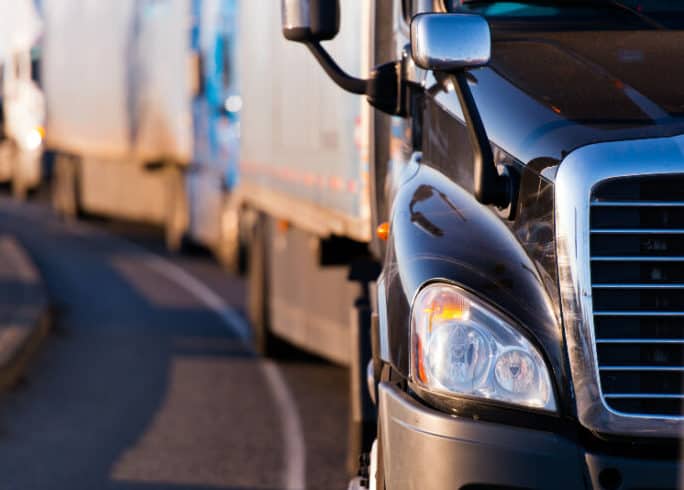How to Reduce Future 18-Wheeler Wrecks, According to Trucking Industry Experts
August 3, 2021
Technology, New Regulations & Road Upgrades Could Do a Lot to Prevent Future Crashes, Experts Say
Last year, more than 32,500 commercial vehicle wrecks occurred on Texas roads. Nationally, that number more than triples, with well over 100,000 truck accidents happening across the U.S. annually.
As much as these crashes can cost motor carriers and others, they can also leave behind severe injuries and, in the worst cases, the tragic and needless loss of life.
Looking to put an end to the devastating impacts of preventable 18-wheeler accidents, trucking industry experts say there’s hope — and that there are real ways to curb big rig wrecks and make the roads safer for everyone.
5 Things That Can Prevent Truck Accidents in the Future, Experts Say
The technologies, policy changes, and new practices that could help reduce future tractor-trailer crashes will likely take shape with the following, according to trucking industry experts. Many of these industry-shaping changes are already in the works with testing, evaluations, or production.
1. Self-Driving Trucks
Driverless big rigs could automate a substantial amount of the tasks needed to safely operate an 18-wheeler on the roads. That could mute factors like trucker fatigue, driver impairment, and even inattention, greatly reducing crash risks. Similarly, driverless trucks can be programmed to leave a specific amount of headway between vehicles and to never exceed speed limits.
Given that a driver-related factor is involved in about 87% of truck accidents, self-driving trucks could go a long way towards curbing crashes.
Keep in mind that self-driving trucks have not been suggested as a replacement for truckers (at least not any time soon). Driverless technology, though great in predictable conditions, doesn’t hold a candle to humans behind the wheel when the unexpected arises.
2. Automated Inspections
Another way experts see technology impacting the future of truck safety is through enhanced, automated pre-trip inspections and roadside inspections. The idea is that all pre-trip inspections would be automatically conducted by a diagnostic system, which would then document and preserve the inspection findings.
Any issues with a big rig would be immediately flagged for repair and reported to motor carriers. Additionally, inspection reports would be digitally sent to waystations or other locations where roadside inspections occur to affirm a truck is in good condition (i.e., has passed inspections).
These types of automated truck inspections could prevent all sorts of inspection-related issues that may contribute to truck wrecks, like:
- Oversights: Inspection technology can prevent the possibility that a trucker or inspector will overlook or fail to detect a defect or deficiency with a truck.
- Inexperience: It won’t matter if a trucker is brand-new to the industry or just to a specific big rig. The inspection will be thoroughly and properly completed, regardless of trucker experience.
- Negligence: In some cases, unscrupulous drivers or motor carriers may cut corners, failing to do the proper inspections or make the repairs they need to after inspecting a truck. Again, automated inspections could address this problem, reporting all problems with a truck so they can’t be ignored or brushed under the carpet.
3. Updates to Existing Trucking Regulations
One such update that’s currently in the works is a proposal to:
- Expand the official definition of “vehicle safety technology” (VST): Regulators would like to “include additional items of equipment that are intended to promote driver, occupant, and roadway safety. These items included braking warning systems, braking assist systems, automatic emergency braking, driver camera system, attention assist warning, and traffic sign recognition.”
- Increase the area where VST devices can be mounted: Specifically, regulators propose a modification to “increase from 100 mm (4 inches) to 216 mm (8.5 inches) the distance below the upper edge of the area swept by the windshield wipers within which vehicle safety technologies may be mounted. The other parameters would remain unchanged.”
It remains to be seen if this proposal will become a new federal trucking regulation. Whether it does or not, there are sure to be more updates to trucking regulations in the coming years, with the intent of enhancing roadway safety and preventing 18-wheeler accidents.
4. Truck Platooning
Truck platooning involves the use of “connectivity technology” and other safety support systems to “link” at least two 18-wheelers in a convoy. The idea is that these trucks can use each other’s safety data and systems to automatically brake, adjust the steering, and leave safe distances between trucks.
While truck platooning is currently focused on connectivity between tractor-trailers, eventually, industry experts hope that this connectivity could extend to other passenger vehicles on the roads as well.
Technology, regulations, and testing are the hold-ups for greater deployment of truck platooning. Still, this up-and-coming practice is gaining more and more traction with the continued advancement of safety technology.
5. Transportation Infrastructure Improvements
The Build America Act of 2021 promises billions to improve roads, highways, bridges, and other transportation infrastructure. While this bill is still making its way through Congress, it could result in a massive overhaul to America’s aging roads.
Given that road conditions are a factor in about 16% of all truck accidents, these upgrades and expansions also hold great potential to curb tractor-trailer accidents.
Preventing Future Truck Accident: The Bottom Line
While industry experts see many opportunities for reducing 18-wheeler accidents in the future, the truth is that industry players — and others on the roads — have the power to start curbing these wrecks now. By fully committing to safety, everyone can do their part to reduce crash risks and start taking action to prevent avoidable wrecks today.
